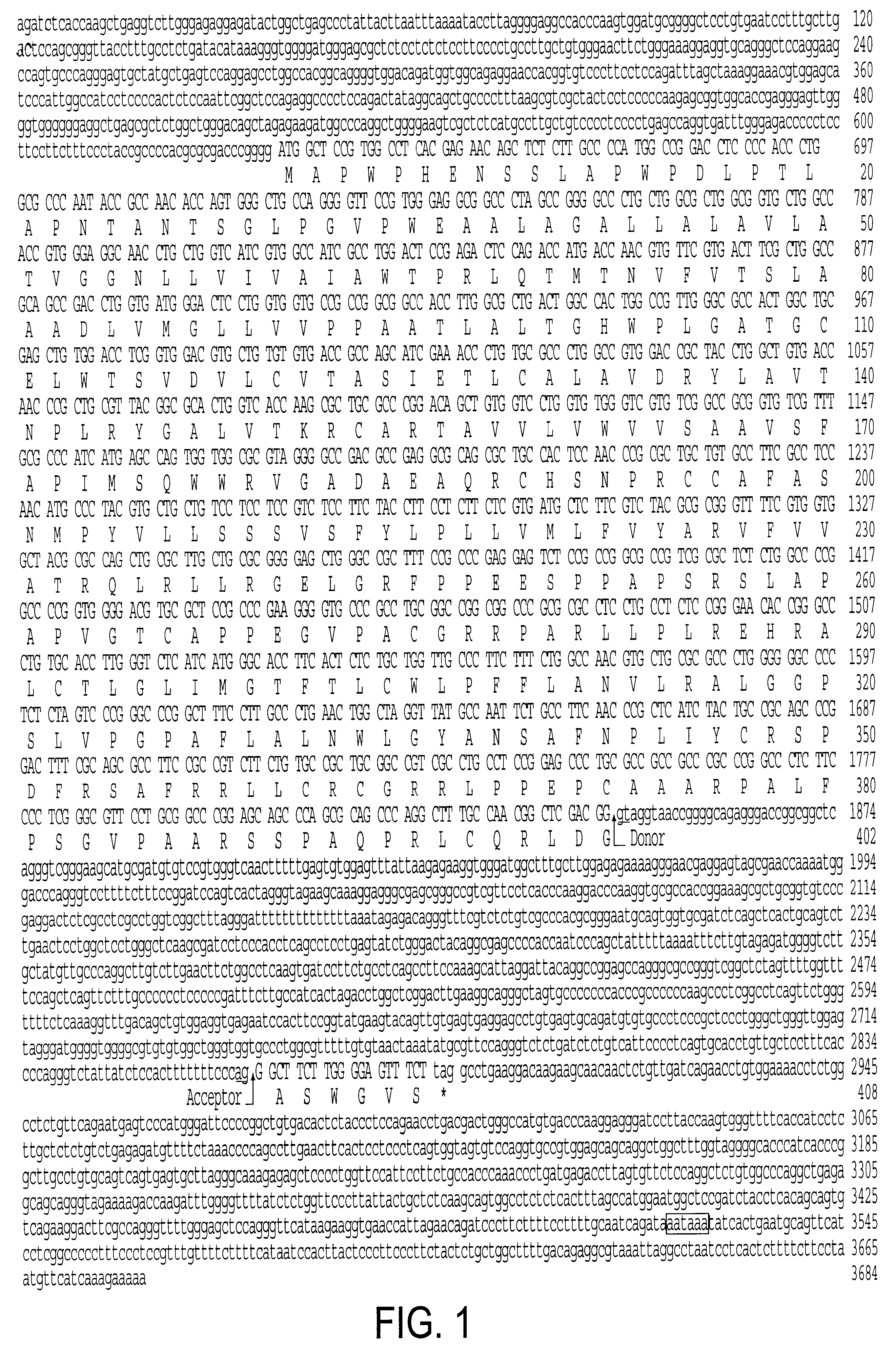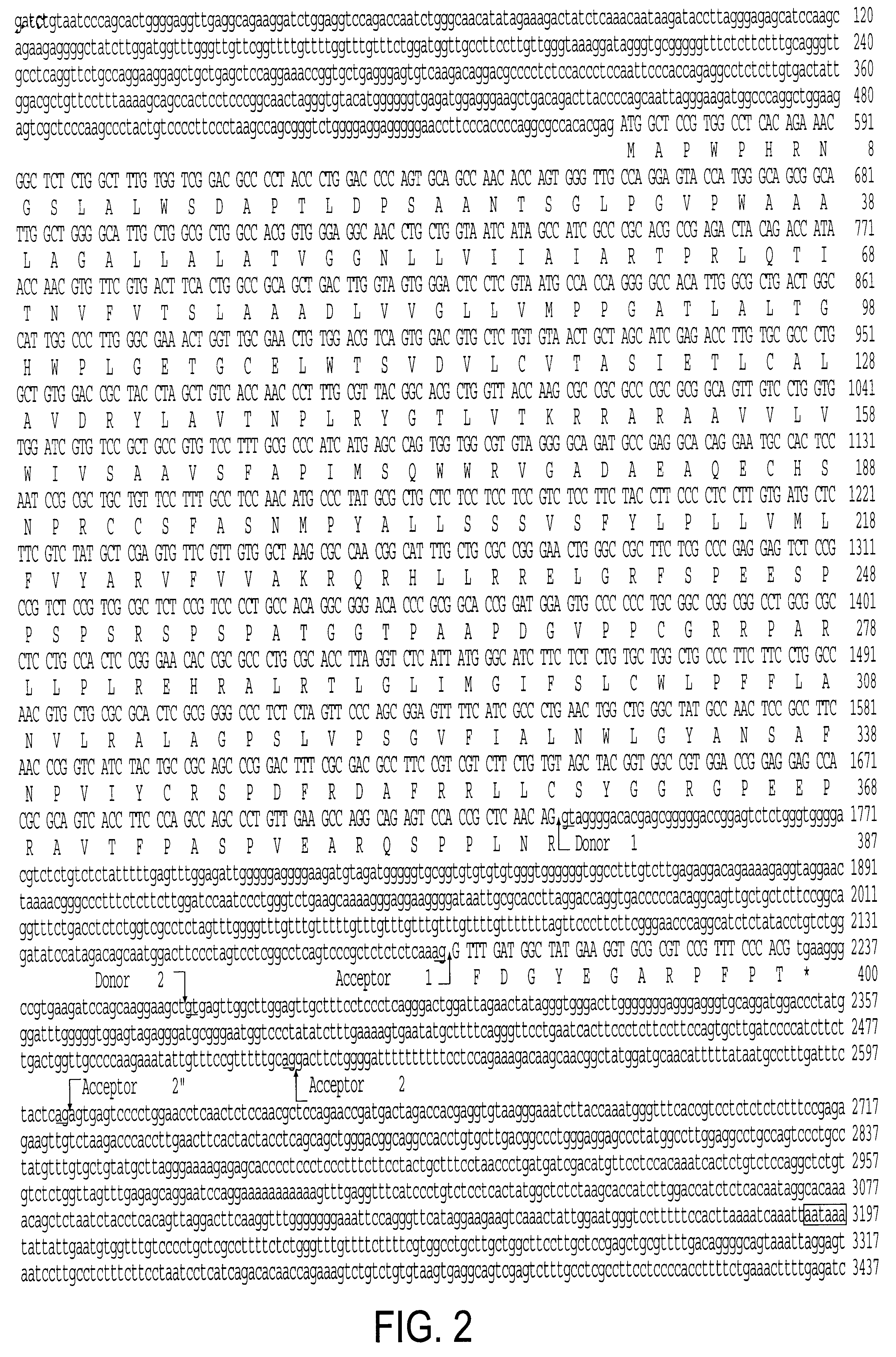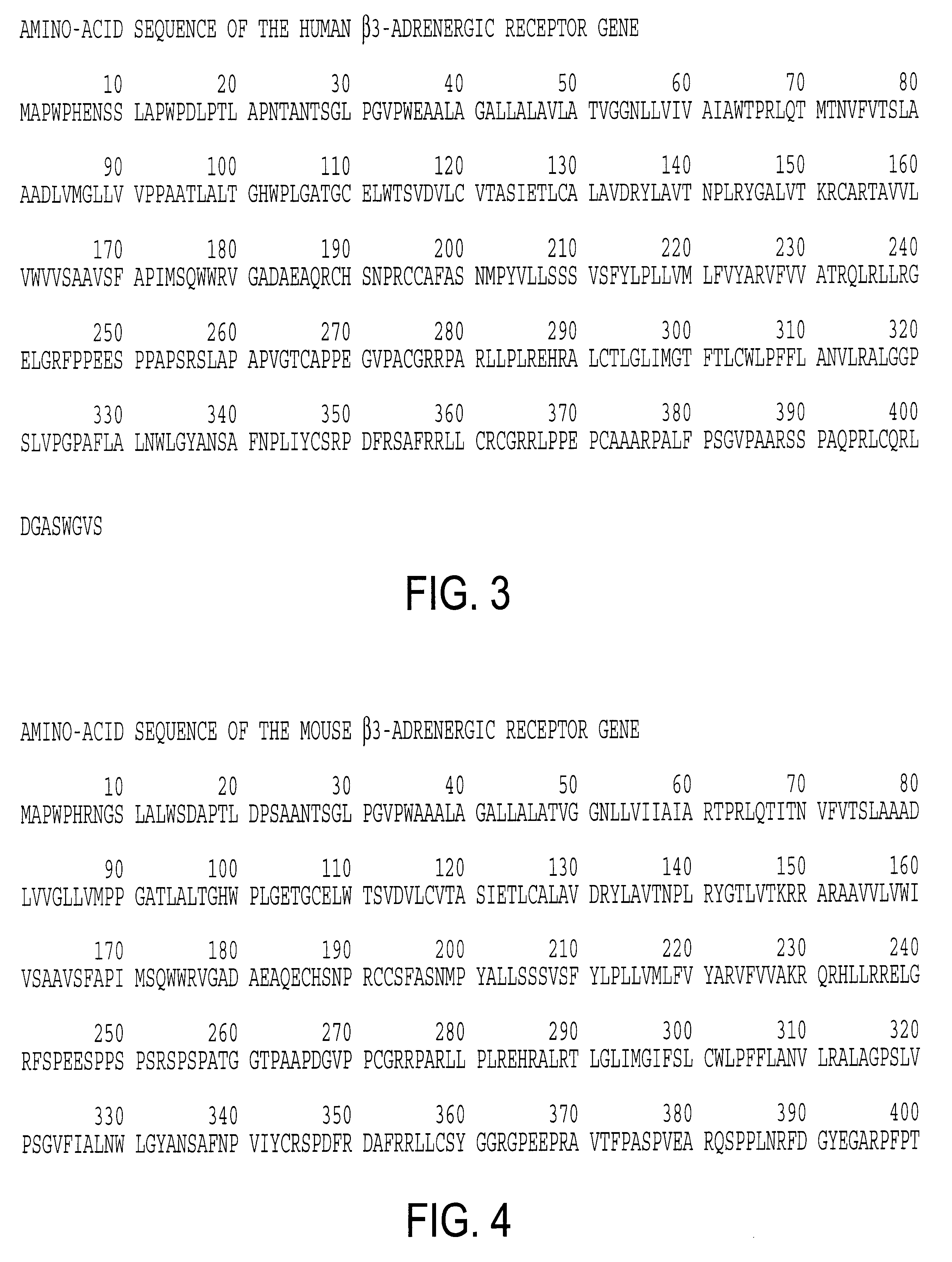Intron/exon structure of the human and mouse beta3-adrenergic receptor genes
a beta3-adrenergic receptor, human and mouse technology, applied in the field of polypeptides, can solve the problems of many side effects in individuals, and achieve the effects of reducing obesity, increasing the amount of beta3-adrenergic receptors, and increasing transcription
- Summary
- Abstract
- Description
- Claims
- Application Information
AI Technical Summary
Benefits of technology
Problems solved by technology
Method used
Image
Examples
example 2
DNA Probe and Hybridization Analysis
A 310 bp DNA fragment ("A43") corresponding to the N-terminus of the mouse .beta.3-adrenergic receptor was produced by polymerase chain reaction using a template of 5 ng of the lambda clone containing the mouse .beta.3-adrenergic receptor gene. Thirty cycles of amplification at 93.degree. C. for 1.5 minute; 55.degree. C. for 2 minutes; and 72.degree. C. for 2 minutes were performed using 2.5 U Taq polymerase (Cetus) in 100 .mu.l of buffer containing 10 mM Tris-HCl (pH 8.4), 3 MM MgCl.sub.2, 0.05% TWEEN 20, 0.05% NP40, 10% dimethylsuplhoxide, 5% formamide, 125 .mu.M of each deoxynucleotide triphosphate and 125 pM of each primer. Sense (SEQ ID NO:7) (5'-GCTCCGTGGCCTCACGAGAA-3') and antisens (SEQ ID NO:8) (5'-CCCAACGGCCAGTGGCCAGTCAGCG-3') primers corresponding to amino acids 2-8 and 98-106, respectively of the human .beta.3-adrenergic receptor sequence. The amplified 310 bp DNA fragment was purified by electrophoresis through an acrylamide gel. .sup....
example 3
For chromosal localization of the .beta.3-adrenergic receptor gene in mouse, in situ hybridization was performed on metaphase spreads of concavalin A-stimulated lymphocytes from a WMP male mouse, in which all the autosomes except number 19 were in the form of metacentric Robertsonian translocations. For localization of the .beta.3-adrenergic receptor gene in man, metaphase spreads were from phytohaemagglutinin-stimulated human lymphocytes. In both cases the lymphocytes were cultured at 37.degree. C. for 72 hrs., with 5-bromodeoxyuridine (60 .mu.g / ml) added for the final 7 hours of culture.
Specific probes were the 310 bp A43 fragment of the mouse .beta.3-adrenergic receptor gene and a 206 bp (AccI-ApaLI) DNA fragment encompassing the third intracytoplasmic loop of the human .beta.3-adrenergic receptor. These fragments were subcloned into the pUC19 plasmid vector, tritium labelled by nick translation to a specific activity of 10.sup.8 d.p.m. / .mu.g, and used at a f...
example 4
Construction, Cell Culture and Transfections
For expression in eukaryotic cells, a 1365 bp NarI-BamHI restriction fragment from the mouse .beta.3-adrenergic receptor gene was inserted under the control of the SV40 early promoter into a plasmid vector containing the 3'-untranslated region of the gene for the hepatitis-B surface antigen, and murine dihydrofolate reductase (DHFR) gene as a selectable marker as described by Larsky et al. Biotechnology, 2, pgs. 527-530 (1984). The resulting construct contained 15 bp of 5' untranslated region, 1164 bp of coding region and 186 bp of 3' non-coding region of the mouse .beta.3-adrenergic receptor gene.
CHO cells, deficient in DHFR, were grown in Ham's .beta.12 medium (Seromed) supplemented with 10% fetal calf serum, 2 mM L-glutamine, 15 .mu.g / ml glycine, 9.5 .mu.g / ml hypoxanthine and 1.46 .mu.g / ml thymidine. Transfection with 5 .mu.g of the expression vector was performed by the calcium phosphate precipitation method as described by Tate et al....
PUM
 Login to View More
Login to View More Abstract
Description
Claims
Application Information
 Login to View More
Login to View More - R&D
- Intellectual Property
- Life Sciences
- Materials
- Tech Scout
- Unparalleled Data Quality
- Higher Quality Content
- 60% Fewer Hallucinations
Browse by: Latest US Patents, China's latest patents, Technical Efficacy Thesaurus, Application Domain, Technology Topic, Popular Technical Reports.
© 2025 PatSnap. All rights reserved.Legal|Privacy policy|Modern Slavery Act Transparency Statement|Sitemap|About US| Contact US: help@patsnap.com



